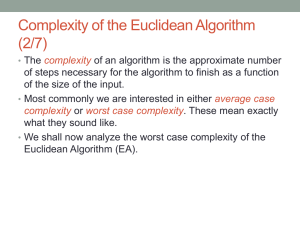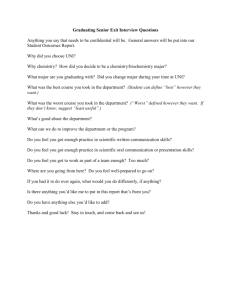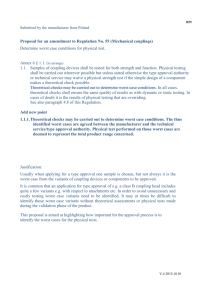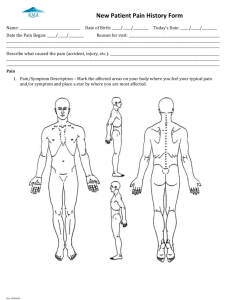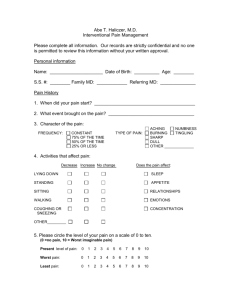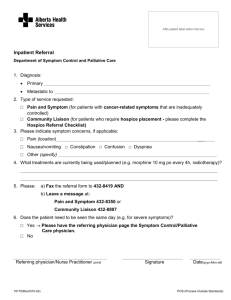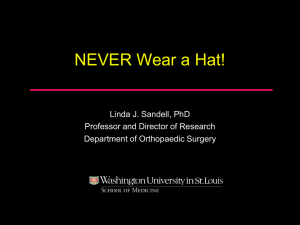The definition of worst case conditions for risk management is
advertisement
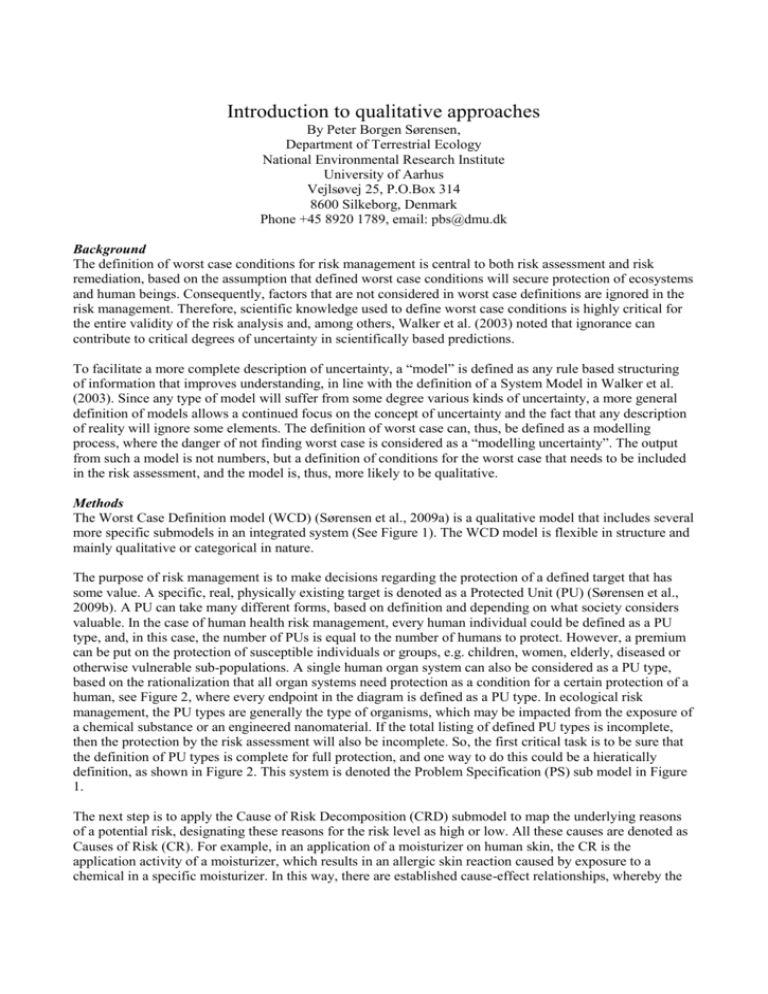
Introduction to qualitative approaches By Peter Borgen Sørensen, Department of Terrestrial Ecology National Environmental Research Institute University of Aarhus Vejlsøvej 25, P.O.Box 314 8600 Silkeborg, Denmark Phone +45 8920 1789, email: pbs@dmu.dk Background The definition of worst case conditions for risk management is central to both risk assessment and risk remediation, based on the assumption that defined worst case conditions will secure protection of ecosystems and human beings. Consequently, factors that are not considered in worst case definitions are ignored in the risk management. Therefore, scientific knowledge used to define worst case conditions is highly critical for the entire validity of the risk analysis and, among others, Walker et al. (2003) noted that ignorance can contribute to critical degrees of uncertainty in scientifically based predictions. To facilitate a more complete description of uncertainty, a “model” is defined as any rule based structuring of information that improves understanding, in line with the definition of a System Model in Walker et al. (2003). Since any type of model will suffer from some degree various kinds of uncertainty, a more general definition of models allows a continued focus on the concept of uncertainty and the fact that any description of reality will ignore some elements. The definition of worst case can, thus, be defined as a modelling process, where the danger of not finding worst case is considered as a “modelling uncertainty”. The output from such a model is not numbers, but a definition of conditions for the worst case that needs to be included in the risk assessment, and the model is, thus, more likely to be qualitative. Methods The Worst Case Definition model (WCD) (Sørensen et al., 2009a) is a qualitative model that includes several more specific submodels in an integrated system (See Figure 1). The WCD model is flexible in structure and mainly qualitative or categorical in nature. The purpose of risk management is to make decisions regarding the protection of a defined target that has some value. A specific, real, physically existing target is denoted as a Protected Unit (PU) (Sørensen et al., 2009b). A PU can take many different forms, based on definition and depending on what society considers valuable. In the case of human health risk management, every human individual could be defined as a PU type, and, in this case, the number of PUs is equal to the number of humans to protect. However, a premium can be put on the protection of susceptible individuals or groups, e.g. children, women, elderly, diseased or otherwise vulnerable sub-populations. A single human organ system can also be considered as a PU type, based on the rationalization that all organ systems need protection as a condition for a certain protection of a human, see Figure 2, where every endpoint in the diagram is defined as a PU type. In ecological risk management, the PU types are generally the type of organisms, which may be impacted from the exposure of a chemical substance or an engineered nanomaterial. If the total listing of defined PU types is incomplete, then the protection by the risk assessment will also be incomplete. So, the first critical task is to be sure that the definition of PU types is complete for full protection, and one way to do this could be a hieratically definition, as shown in Figure 2. This system is denoted the Problem Specification (PS) sub model in Figure 1. The next step is to apply the Cause of Risk Decomposition (CRD) submodel to map the underlying reasons of a potential risk, designating these reasons for the risk level as high or low. All these causes are denoted as Causes of Risk (CR). For example, in an application of a moisturizer on human skin, the CR is the application activity of a moisturizer, which results in an allergic skin reaction caused by exposure to a chemical in a specific moisturizer. In this way, there are established cause-effect relationships, whereby the CR is the cause for a given effect (risk). It is clear that the CRs can be defined at different levels of detail, and it is, therefore, possible to sub divide CRs into more detailed causes. In the case of the skin allergy risk, it is possible to sub divide the moisturizer application into the amount of moisturizer used and the concentration of the chemical in the moisturizer. A general sub division is possible to cover chemicals and nanomaterials, as shown in Figure 3. However, in real cases, this sub division should continue to a more detailed level, depending on the specific problem. Protection specification submodel (PS) Cause of Risk Decomposition submodel (CRD) Worst-Case Composition submodel (WCC) Worst Case Positioning submodel (WCP) Sub-model PS Aim To specify goal for protection Method Mapping protection units (PU) based on sequential division into subtypes CRD To map the reasons for potential risk Describing all relevant causes of risk (CR) as cause-effect chains for the PUs identified in the PS model WCC To find risk factors WCP To reduce protection uncertainty by supporting assessment and monitoring 1. Setting up context and concepts 2. Ranking of PU individually 3. Ranking of PU-CR relations Applying risk indicators for the outcomes of the WCC model to find the actual location of worst case conditions Outcome Listing of relevant PU types that potentially should be included in worst case Listing of relevant CRs that potentially should be included in the worst case conditions Risk factors that must be included in the worst case definition Location of the worst-case conditions Figure 1. Relationship between the different submodels in the Worst Case Definition (WCD) model and overview of aims, methods, and outcomes of the submodels (Sørensen et al., 2009a) The next step is to couple the PU types and the CRs in a matrix and make an assessment to estimate the most critical combination of PU types that are most central for protection and CRs that are most important for those PU types (denoted the Worst Case Composition (WCC) model in Figure 1). Knowledge is needed for this job, and supporting methods as e.g. the NUSAP method (Van der Sluijs et al., (2005)) can support this task of finding lines of evidence. One argument against doing qualitative methods as described above is that there is to much missing knowledge for this to define PU type, CRs and to join them for assessment most critical issues for modelling risk levels. The answer to this is that if there is so much missing knowledge, then any form for quantitative subsequent modelling risk level will be impossible. Furthermore, it is not possible to make any useful assessment of uncertainty in relation to real conditions without assessment of factors that are ignored in the modelling and, thus, without support from a qualitative model. Figure 3. A general principle that defines the causes of risk form chemicals/nanomaterials I a hieratical way (Sørensen et al., 2009a) Useful link for mapping PU types and CRs: http://freemind.sourceforge.net/wiki/index.php/Main_Page References Sørensen, P.B., Assmuth, T., Greiger, K., Baun A., Thomsen, M., 2009a, Conscious worst-case definition for risk assessment part I, A methodological knowledge mapping for finding worst-case in risk assessment, Sci Total Environ (2009), doi:10.1016/j.scitotenv.2009.11.010. Sørensen, P. B., R. Brüggemann, M. Thomsen, S. Gyldenkærne, 2009b, How to Guide and Assess Risk Reduction using Risk Characterization Indicators, American Journal of Applied Sciences 2009; 6, (6): 1255-1263. Sørensen, P.B., Giralt, F., Rallo, R., Espinosa G., Münier, B., Gyldenkærne, S., Thomsen, M., 2009c, Conscious worst case definition for risk assessment part II. A case study demonstration for pesticide risk assessment, Sci Total Environ (2009), doi:10.1016/j.scitotenv.2009.11.030. Walker WE, Harremoes P, Rotmans J, Van Der Sluijs JP, Van Asselt MBA, Janssen P, Krayer Von Krauss MP. Defining Uncertainty, A Conceptual Basis for Uncertainty Management in Model-Based Decision Support. Integrated Assessment 2003; 4, 1: 5-17. Van der Sluijs J, Craye M, Funtowicz S, Kloprogge P, Ravertz J, Risbye J. Experiences with the NUSAP system for multidimensional uncertainty assessment. Water Science and Technology 2005; 52, (6): 133-144. Figure 2. An example that defines PU types based on organs for protecting humans Acknowledgements This work has been part of and has been funded within the project Novel Methods for Integrated Risk Assessment of Cumulative Stressors in Europe (NoMiracle, contract no. 003956) under the EU's6th Framework Program for R&D. Additional support from our employers is acknowledged.
